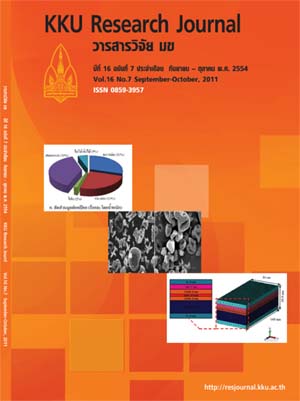Semi-interpenetrating polymer networks of poly (4- Styrenesulfonic acid) and poly (Acrylic acid) for fuel cell applications
Main Article Content
Abstract
Semi-interpenetrating networks (sIPN) of poly(4-styrenesulfonic acid) and crosslinked poly(acrylic acid) were prepared to use as proton-conducting membranes in fuel cells. The effects of molar ratio of PSSA to PAA and degree of crosslinking on membrane properties, including hydrophilicity, water stability, and thermal stability, were studied. The membrane with low PSSA content and maximum degree of crosslinking exhibited the lowest hydrophilic and highest water resistant properties. Thermogravimetric analysis (TGA) indicated that the membranes were stable up to approximately 200 °C under nitrogen atmosphere. Scanning electron microscopy (SEM) observation suggested the homogeneity of sIPN membrane.
Article Details
How to Cite
Boonpoo-nga, R., Sriring, M., Nijpanich, S., Wongbuth, L., & Martwiset, S. (2017). Semi-interpenetrating polymer networks of poly (4- Styrenesulfonic acid) and poly (Acrylic acid) for fuel cell applications. Asia-Pacific Journal of Science and Technology, 16(7), 757–763. retrieved from https://so01.tci-thaijo.org/index.php/APST/article/view/83562
Section
Research Articles

